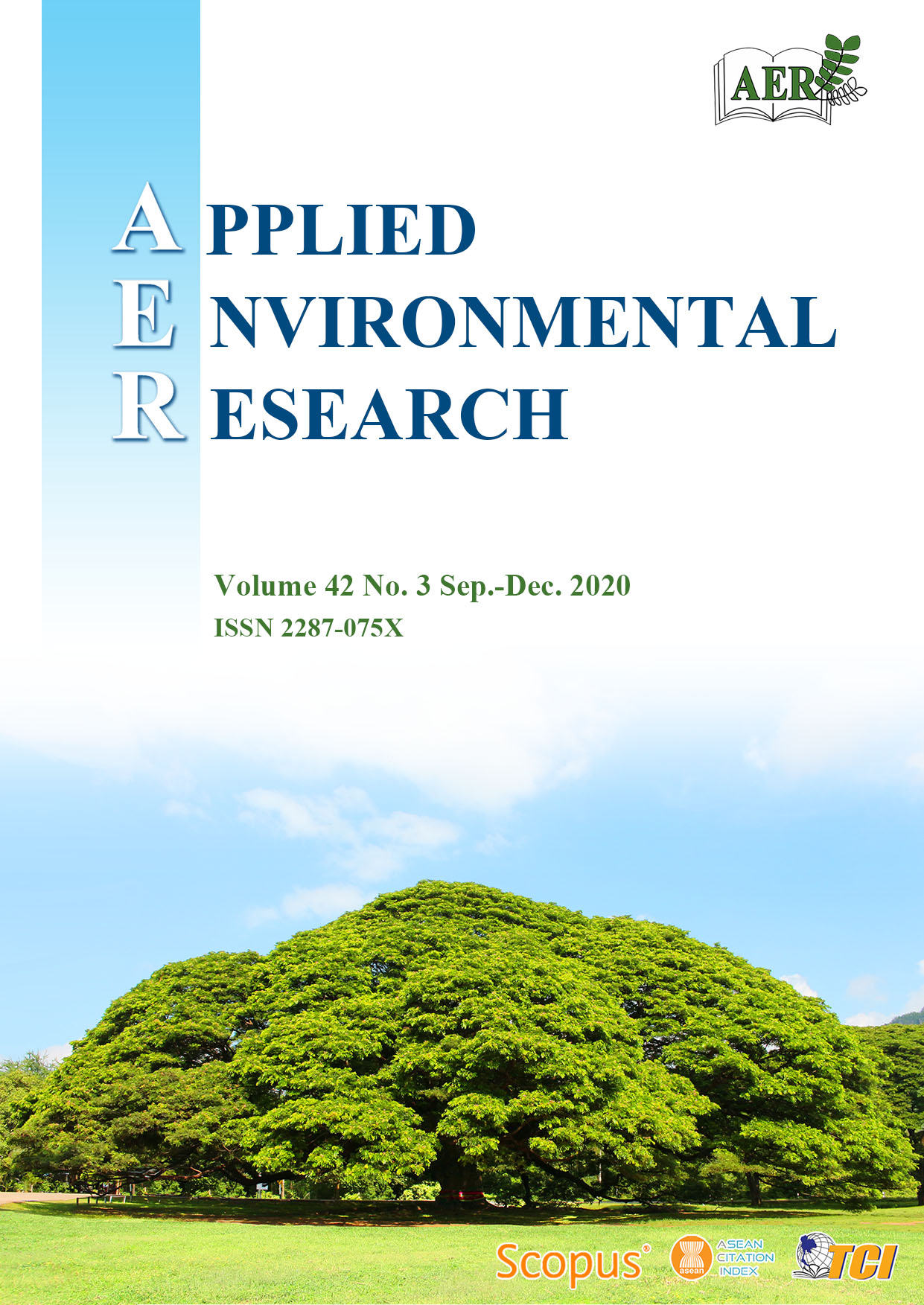Characterization of PM2.5–bound Polycyclic Aromatic Hydrocarbons in Chiang Mai, Thailand during Biomass Open Burning Period of 2016
Main Article Content
Abstract
Polycyclic aromatic hydrocarbons (PAHs) bounded to ambient fine particles (PM2.5) were determined for enabling health risk assessment and source identification of ambient aerosols. Daily PM2.5 samples (24 h) were collected on quartz fiber filters by using a low volume air sampler (16.7 L min-1) during smoke haze period (March–April 2016) in Chiang Mai, Thailand. An average concentration of PM2.5 (n=54) was 65.3±17.6 μg m-3. The samples were extracted with dichloromethane using ultrasonication prior to PAHs analysis by GC-MS. Average concentrations of 16-PAHs, non-carcinogenic (nc) PAHs and carcinogenic (c) PAHs were 10.23±2.49, 5.48±1.70 and 4.75±1.43 ng m-3, respectively. Ratio values of cPAHs/ncPAHs ranged from 0.44 to 1.98. Strong correlation (r= 0.76) between PM2.5 and cPAHs concentration was observed. Toxicity equivalent concentrations (TEQ) of PAHs was 1.13±0.34 ng m-3. The value of inhalation cancer risk (ICR) for exposure of ambient PAHs calculated from TEQ value was 1.0×10-4 indicating high risk for long term exposure. Diagnostic ratios (DRs) of various pairs of PAHs revealed that biomass burning is a major source during smoke haze period.
Article Details

This work is licensed under a Creative Commons Attribution-NonCommercial 4.0 International License.
Published articles are under the copyright of the Applied Environmental Research effective when the article is accepted for publication thus granting Applied Environmental Research all rights for the work so that both parties may be protected from the consequences of unauthorized use. Partially or totally publication of an article elsewhere is possible only after the consent from the editors.

